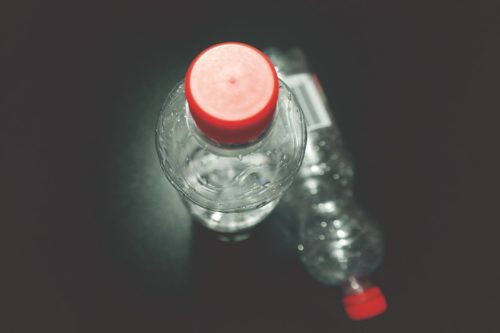The other week, our class was split into groups. Each group was tasked to create a brand concept around a product that would target a specific demographic. The demographic we were given was Circus Performers. The product was Bottled Water.
The group’s initial instinct was to create a brand of water that was stereotypically circus-y. That is, over-the-top colorful, with big and bold circus typeface, and maybe some hoops and lions for good measure. Something really creative like that (ha!). But of course, that wasn’t the point of the assignment. The objective was to understand user-centered design. What would happen if we really thought about our consumer. Thought about who he is; what he likes to do; what he likes to eat; what his hobbies are; how he grew up; what he carries in his bag . . . basically, get to know him more than we knew ourselves. In real life, designers would conduct user research to get this information. But since this was classroom make-believe, we coughed up a profile of our typical circus performers:
Marcel, a circus clown. 45 years old, English with a French mother, lives alone in a sparsely furnished flat, and is really depressed inside. He frequents the same bars and cafes where people know him, but are wary of his acerbic side comments. He reads French philosophers, and dreams of writing a book someday.
Kataryna, an acrobat. 26-years old, Eastern European, and married to her co-performer. She has quirky hobbies like trainspotting and collecting snow globes. She wants to retire from circus life, have 3 kids and put up a coffee shop, but her husband wants to keep traveling with the circus.
By drawing out these profiles and gleaning insights, it created the momentum for approaching brand conceptualization in a different way. We realized that circus performers want nothing to do with the pretense of a circus when they are off-duty. Instead, they want honesty and simplicity from everything and everyone. No fake, no overselling, no over the top. They are also quirky but intelligent individuals.
Honesty, simplicity, wit. We used these as our hooks. Every other bottled water company sells water as fresher, clearer, smarter, more magical than the next. In reality, however, it’s just water. But still a necessity. And we were going to sell it as that. Given this, our brand idea would be: Being honest about water. Our brand’s tone of voice: matter-of-fact, straight to the point, clever and a little arrogant (“Whatever. You need me.”). And our brand: BUT STILL.
The clean simply-designed label would say “Nothing special. But still.”
The labels would vary in accordance to where they were being sold. For example,
In a bakery: “Nothing sweet. But still.”
In a bar: “Nothing sexy. But still.”
In a coffee shop: “Nothing caffeinated. But still.”
In a card shop on Valentine’s Day: “Nothing romantic. But still.”
Tag line: “Still water. Still nothing special”.
We patted ourselves on the back for the cleverness of our idea (while some of our classmates scratched their heads in confusion). But more importantly, we marveled at how far we had come from our initial concept.
Oh, the things that happen when you put yourself in others’ shoes.
What do you think of the concept? Cool? Too clever for our own good? Don’t get it? Let me know!


Awesome! I love that evolution of thinking. Very similar to writing.
How would you accommodate the sparkling version of your water?
Yes!! I also thought that about writing vs. design. They are both exercises in honing in and filtering out the unnecessary. And also of allowing the work to take the turns it wants to take. With writing and design, I often arrive at places miles away from where I originally intended to go.
And on sparkling, the client will have to pay a little extra for that brain damage. This time, we were only given a bottle of still. 😉